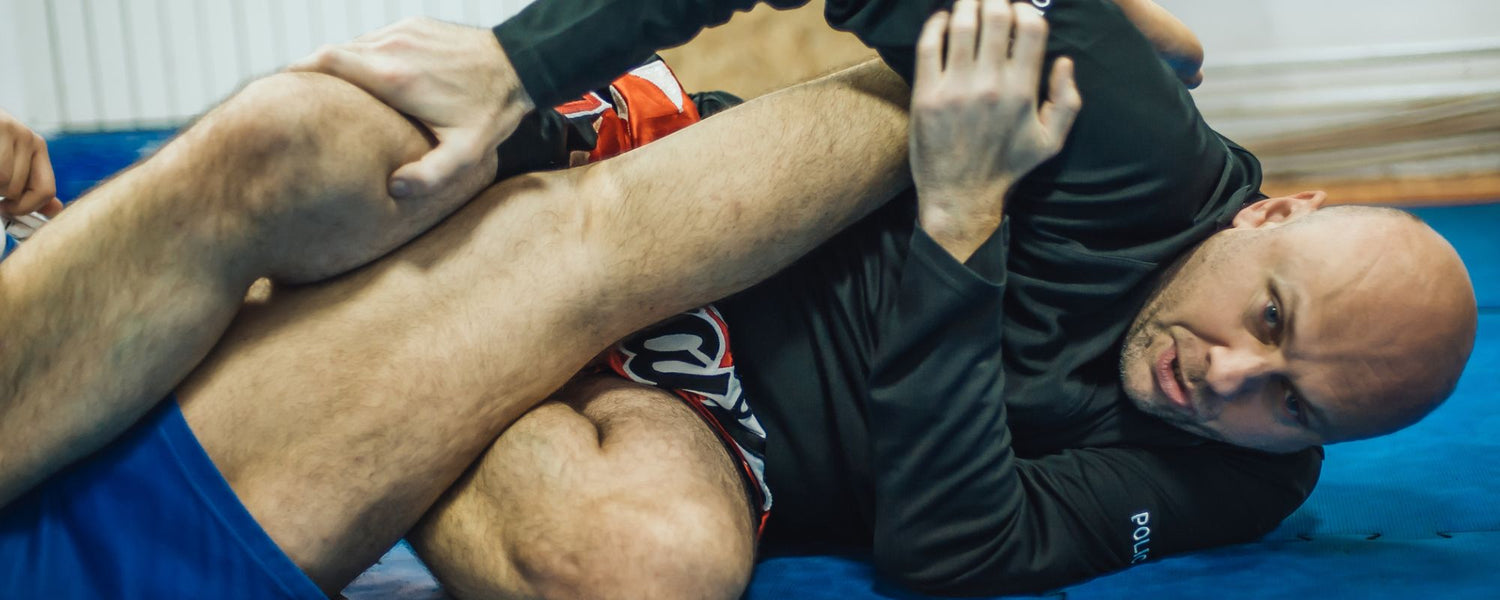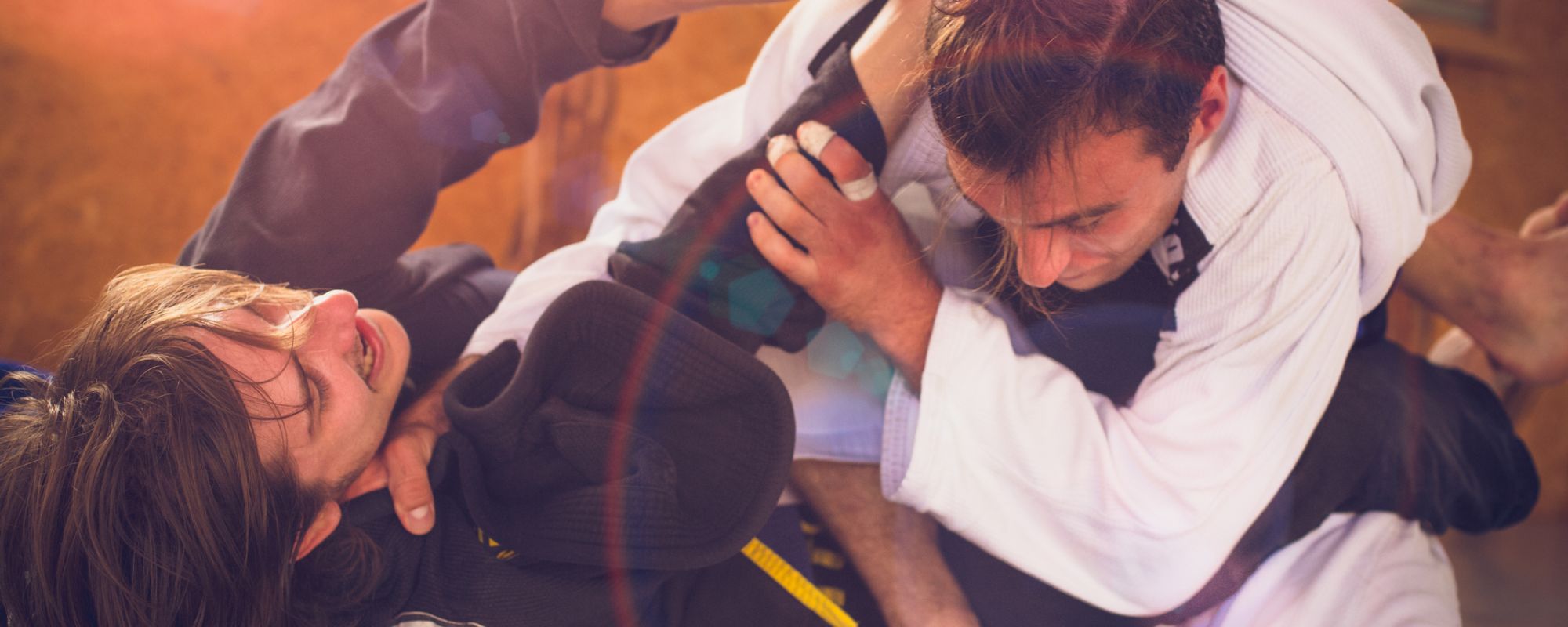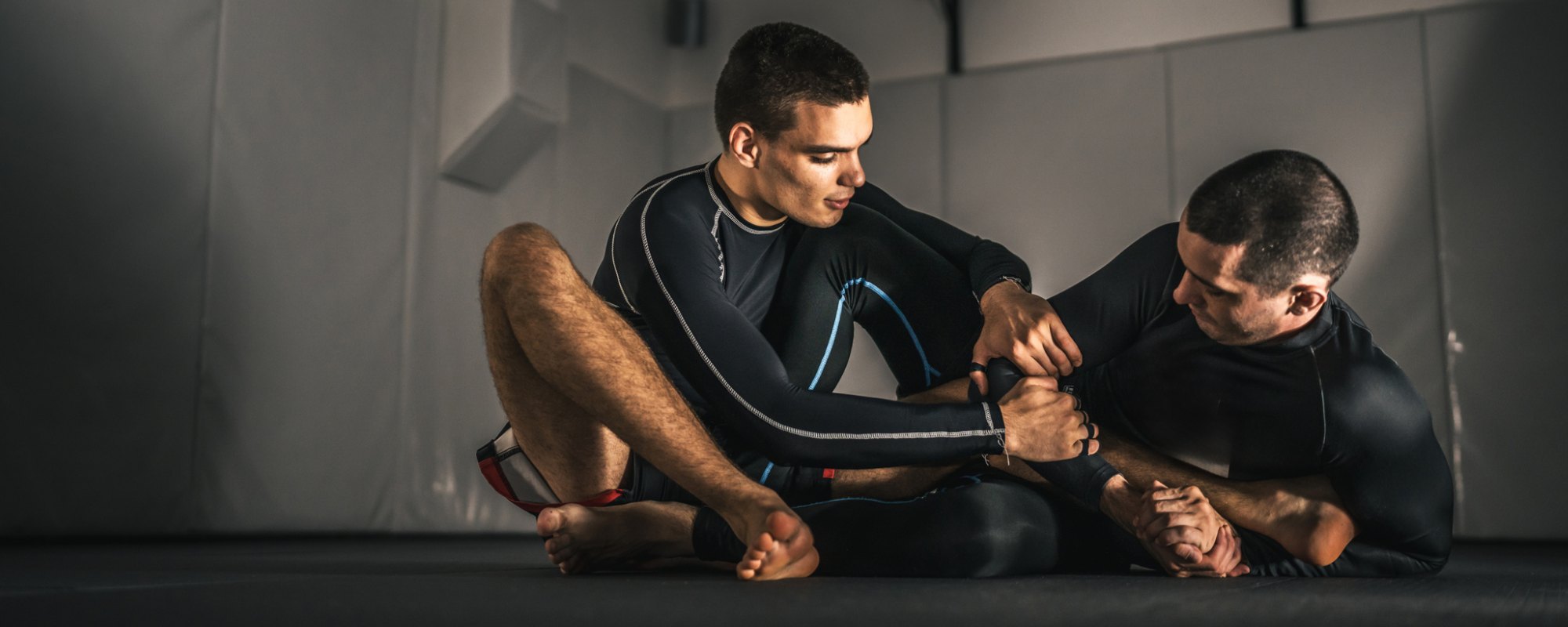The body locks are one of the best ways the grappler can control their opponent’s body. Many of the grapplers learn how they apply the body lock. But they forget to see the other side of the story. The other side is the body lock pass . In the reverse manner, grapplers should also know and learn what they should and how they can execute the body lock pass if they find themselves in such a situation. So in this article, we will explore the different body lock passes and their types. Let’s dive into this.
Table of content
1. What Is a Body Lock?
A body lock is a technique in Brazilian Jiu Jitsu that locks the upper body of the opponent. It is a versatile technique or lock in a way that you can do it both in a standing position and while you are on the ground. You can lock your opponent’s upper part of the body by wrapping your arms and then locking them. You cross your arms usually around their waist. Mostly in a body lock, you are crossing arms under their arms, which is known as the underhook. So you can say the body lock is the modified form of the underhook.
2. What Is a Body Lock Pass?
A body lock pass is a pass which is utilized to break the guard of the opponent. Simply it is a body lock applied on the opponent which helps to pass their guard.
Steps of Body Lock Passes
The following are the steps in the body lock pass:
The grappler wraps their arms around the upper part of their opponent’s body.
The arms are crossed and locked.
The locked arms are on the opponent's midsection.
After locking the arms, the grappler pushes or pins their opponent down using their hips or chest.
The ability of the opponent to move around is restricted to a major extent due to being pinned.
The next step involves getting the opponent straight on the ground. The grappler uses the legs of the opponent to flatten them on the mat. This further helps the grappler to get the guard of their opponent passed.
3. Speed Passing Vs Pressure Passing: Which One Is More Effective
Speed passing and pressure passing are the two most common forms of passes that are used by the grapplers in the Brazilian Jiu Jitsu. The grapplers in the BJJ rely on two things to pass the guard, which are speed and the pressure. With the speed pass, this means that the grappler uses quick movements and explosiveness to create spaces, angles, and break the guard. The grappler moves as fast as they can.
On the other hand, in pressure pass, the grappler relies on pressurizing their opponent, dropping their weight on them to make them submissive and achieve the dominant position. Body lock passes mostly following the pressure passing.
Now the question arises, which one is more effective, the pressure passing or the speed passing? The correct answer is both. It depends on the type of grappler, their priority or choice in which they can do better, the situation and timing of the match, the position of the grappler and their opponent. So both the speed passing and pressure passing are effective. You just have to make sure that you are executing the techniques and moves correctly.
4. Some Types of Body Lock Passes
- Body lock passes are continuously growing in popularity due to their usage in passing the lock and guard. Guard retention becomes very weak if you are doing the body lock pass correctly, fulfilling all the required steps mentioned above. With the rise in popularity, the different variations also evolve just to make it even better. All these types serve the same function, such as locking the opponent’s body, applying immense pressure, and then getting the opponent straight on the mat.
- But each type differs slightly in the way they are applied and the effectiveness in different situations of the match. The following are the famous types of body lock passes that you should consider in your body lock pass learning:

4.1 High Body Lock
The high body lock is a type of body lock pass in which the lock is placed just under the ribs or around the mid back. The word “high” in high body lock means that the lock or hands or arms are placed higher on the opponent’s body as compared to the other body lock passes.
The main benefit of a high body lock pass is that it restricts your opponent from moving upwards to counter your lock. They are restricted to the ground and are unable to sit. They remain on the mat lying with their back on it. So the opponent can neither move upwards nor can they counter your lock pass, making it a very effective body lock pass type.
As we have discussed, the body lock passes vary in their application in different scenarios or situations. The high body lock pass is applied when the opponent is weak or their posture is weak, meaning they are not very strong or they are maintaining their balance on the mat. Another situation in which the high body lock is applied is when the opponent is already lying on the mat. So it becomes very easy and is super effective to apply this kind of body lock pass on the opponent.
4.2 Standard Body Lock
Standard body lock or standard body lock pass, as the name indicates, is the most common type performed in Brazilian Jiu Jitsu. In this type, the grappler locks their arms around their opponent’s lower back. The process starts with the usual steps mentioned previously. The grappler is usually in a crouched position when the standard body lock is performed. This position makes the lock execution easier.
The grappler drops them on the mat to initiate the execution of the standard lock pass. After this, they wrap their arms around their opponent’s lower back or waist, unlike a high body lock, in which the lock is executed higher on the upper body of the grappler.
Following this, the grappler flattens their hips, and at the same time, they make sure their head are kept low on the mat and elbows are very tight. This way pins the opponent on the mat while giving the grappler sheer dominance on the mat.
In the standard body lock, the grappler does everything very slowly. It is not like an explosive technique that you can do quickly within seconds. You have to make sure that your opponent is submitting to every action you take rather than countering them. This is only possible if you do it slowly rather than fast. The standard body lock is perfect for situations in which the opponent has an active guard and is relying on the movement of their hips. The lock restricts the hip movement of their opponent to a major extent, thereby giving the grappler dominance.
4.3 High Tripod Pass
Unlike other body lock passes discussed above, the high tripod body lock pass is a dynamic position. By dynamic position, it means that the grappler or passer is able to move continuously, and they can change their positions. They can do many other things that require being in a state of dynamic. This allowance or opportunity of movement makes the grappler able to create continuous pressure on their opponent, thereby making the high tripod pass very effective.
In this type of body lock pass, the grappler or passer is not in a crouched or very low position. Instead, they remain in a semi standing or standing position. They keep their legs wide open and at the same time, they keep their upper body in a low position. This resembles their position to a tripod stand, and hence the body lock pass is given the name high tripod pass.
The grappler keeps their head low and their hips are high. This position allows the grappler to move from one side to the other, relevant to their opponent. They are also able to create the angles. They can switch their positions from one place or side to the other. This creates pressure on the opponent and increases or helps the grappler become more dominant.
Keeping the hips elevated also makes it difficult for the opponent to sweep away the grappler. Moreover, the grappler can drop their weight on to the opponent and the opponent has to bear all the weight thereby creating more and more pressure on the receiver and the it makes it very difficult for them to counter it.
4.4 Hip Switch
The hip switch is another type of body lock pass. It is very simple as compared to the other body lock passes. In the hip switch, the grappler switches their hips which means that they move their hips from one side to the other side. This movement and switching of the hips helps in breaking the posture of the opponent and when the posture of the opponent breaks, they are no longer maintaining their balance, they cannot retain their guard and ultimately their guard breaks.
The grappler initiates the hip switch by disrupting the base of the opponent. The base or foundation of an opponent is the most important thing for them. Disrupting the base means that they can soon lose their position or dominance. So the grappler disrupts the base by creating angles so that the base or the position breaks.
In the next step, the grappler creates space. The space is necessary for their movement within the opponent’s position so that they can move their legs freely to pass the guard. More often, the grappler applies pressure on the limbs or the hips of their opponent, which makes it even easier for them to break the guard.
The position, balance, or the base of the opponent is disrupted, angles and the space are created, and the grappler successfully breaks the guard of their opponent with the hip switch body lock pass type.
5. Last Words
The body lock pass is the growing concept in the field of Brazilian Jiu Jitsu. Recently, various new types have been discovered in the art some of which are discussed in the article. It is an important technique to learn because it is very effective in passing the guard of the opponent. Guard is a very common technique in BJJ, and you should know how to break and pass the guard of your opponent. To pass the guard, you should learn the body lock passes. You should not start by practicing all types at once. Instead, start with the standard body lock pass and then go on for learning other types. Master one type and only then go for the next pass. This way, you will eventually become the master of the guard pass.
6. Frequently Asked Questions
6.1 What is Speed Passing in Brazilian Jiu Jitsu?
The grapplers in the BJJ rely on two things to pass the guard, which are speed and the pressure. With the speed pass, this means that the grappler uses quick movements and explosiveness to create spaces, angles, and break the guard. The grappler moves as fast as they can.
6.2 What is Pressure Passing in Brazilian Jiu Jitsu?
On the other hand, in pressure pass, the grappler relies on pressurizing their opponent, dropping their weight on them to make them submissive and achieve the dominant position. Body lock passes mostly following the pressure passing.
6.3 What is a Body Lock?
A body lock is a technique in Brazilian Jiu Jitsu that locks the upper body of the opponent. It is a versatile technique or lock in a way that you can do it both in a standing position and while you are on the ground. You can lock your opponent’s upper part of the body by wrapping your arms and then locking them. You cross your arms usually around their waist. Mostly in a body lock, you are crossing arms under their arms, which is known as the underhook. So you can say the body lock is the modified form of the underhook.
6.4 What is a Body Lock Pass?
A body lock pass is a pass which is utilized to break the guard of the opponent. Simply it is a body lock applied on the opponent which helps to pass their guard.
6.5 What Are The Types of Body Lock Pass?
The following are the famous types of body lock passes that you should consider in your body lock pass learning:
High Body Lock
Standard Body Lock
High Tripod Pass
Hip Switch










Leave a comment
This site is protected by hCaptcha and the hCaptcha Privacy Policy and Terms of Service apply.